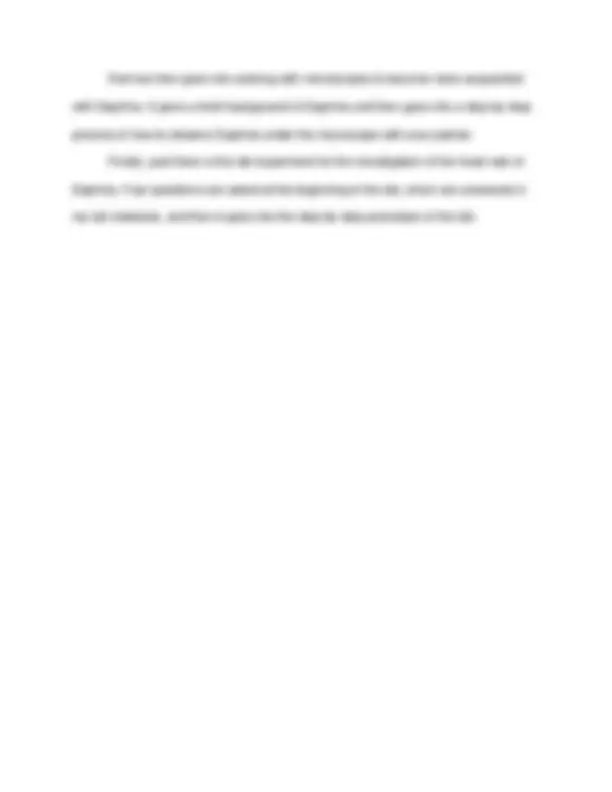



Study with the several resources on Docsity

Earn points by helping other students or get them with a premium plan


Prepare for your exams
Study with the several resources on Docsity

Earn points to download
Earn points by helping other students or get them with a premium plan
Community
Ask the community for help and clear up your study doubts
Discover the best universities in your country according to Docsity users
Free resources
Download our free guides on studying techniques, anxiety management strategies, and thesis advice from Docsity tutors
Details about a lab experiment focused on teaching students the scientific method through investigating the heart rate of daphnia. The lab consists of three parts: a review of the scientific method, microscope practice, and the experiment itself. Students will learn the steps of the scientific process, develop hypotheses, and conduct experiments to test them.
Typology: Lab Reports
1 / 3

This page cannot be seen from the preview
Don't miss anything!


Section 3 Dr. Pablo Delis Joe Lahovski 9/17/
This lab focuses on learning the scientific method. The exercises in this lab are designed to teach a student the steps of the scientific method, how to develop a hypothesis and a scientific experiment to test that hypothesis, organize data tables, and present their data in a graph. This lab is broken up into three parts along with required pre-lab research. The pre-lab research consists of examining the effects of caffeine and alcohol on physiological processes. The first part of the lab is a basic review of the scientific method and its steps. Part two consists of microscope practice for the student to become familiar with the Daphnia magna. The third and final pat of the lab consists of the scientific experiment into the investigation of the heart rate of Daphnia. The lab group will develop a hypothesis and then execute an experiment to test it. Part one is a detailed look at the individual steps of the scientific process. There is a total of five steps in the scientific process. With each step that is reviewed, there is a question that corresponds to the step that is being reviewed. The first step of the scientific process is making observations and asking questions. Step two is developing a hypothesis. In this step, possible explanations are developed to answer the questions asked in step one. This step also explains the difference between a null hypothesis, the suggestion that your experimental treatment will not have an effect on the dependent
variable, and an alternative hypothesis, or a suggestion that there is some type of treatment effect on the dependent variable. It also explains how a hypothesis is usable only if it can be disproved. The third step of the scientific process involves designing an experiment to test the hypothesis. Designing an experiment also involves defining your variables, outlining a procedure, and determining controls that will be used throughout the experiment. There are three types of variables- dependent, independent, and controlled. The dependent variable is the variable that is thought to be affected during the experiment. The independent variable is what is varied during the experiment. Finally, the controlled variable is all other possible independent variables that are not being studied that are held constant throughout the experiment. Next, the investigator must design a procedure that effectively measures the effect of the independent variable on the dependent variable. Three things that must be taken into consideration during this step are determining levels of treatment, deciding on numbers of replication, and determining the control treatments. Levels of treatment are the values the investigator uses for the independent variable. Replication involves repeating the experiment under the exact same conditions to provide consistent results. Finally, control treatment is a treatment in which the independent variable is eliminated or set to a standard value. Step four is to conduct your experiment. Step five is analyzing the results. In this step, your hypothesis will be proven to be supported or not. A falsified hypothesis is one that is not supported by the results of the experiment. Either way, the investigator becomes more knowledgeable of what is being tested.